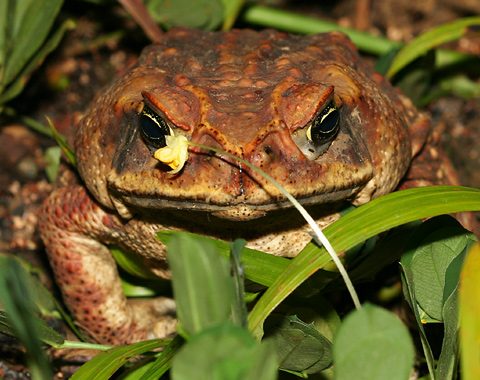Diseases, environmental pollution, habitat loss, and climate change point to being the main cause of the decline of these animals, says an article from the University of Costa Rica (UCR).
Last February, and according to the UCR, the journal Nature Ecology & Evolution published an article on the correlation between the diversity of the microbiome of amphibians and the environment in which they develop. More than 30 scientists from different parts of the world participated in its elaboration, including Juan Abarca Alvarado, Gilbert Alvarado Barboza, Adrián Pinto Tomás, Gabriel Vargas Asensio, and Ibrahim Zúñiga Chaves, from the UCR.
The research involves 2,349 individuals of 205 species of amphibians from 12 countries, spread over 5 continents and seeks to provide explanations that clarify the symbiotic relationships that exist between microorganisms and the amphibians that the former use as hosts.

For the elaboration of the study, statistical models were used that relate variables such as: host species, elevation, latitude, temperature and precipitation in the behavior of microbiomes.
According to the UCR, the results suggest that there is a correlation between the temperature and the diversity of the amphibian microbiome, since it was observed that the moment in which the quantity and diversity increase the most is during the lowest temperature of the coldest month.
Batrachochytrium dendrobatidis (BD) is a fungus that attaches to the skin of amphibians and prevents them from breathing, causing cardiac arrest. With colder temperatures reaches the maximum peak of diversity, so the bacterial community of the skin is more resilient, this prevents the fungus colonize the amphibian.
Juan Abarca comments that for the collection of the amphibian bacteria a sterile applicator is passed over the skin of the animal, later, the applicator is made an extraction of DNA that is analyzed in a laboratory to determine which are the microbes present in the individual.
20 species of amphibians have decreased in the country
“In Costa Rica there has been a sudden decrease in approximately 20 species of amphibians since 1980,” says Juan Abarca Alvarado, herpetologist at the Natural Resources and Wildlife Laboratory (Larnavisi) of the National University (UNA), and a Master’s student in Microbiology in the UCR.
According to the UCR in the study, the researchers showed that the composition of bacterial communities varies according to the type of climate in which they develop. This is because different factors varied in the bacteria of the skin of the guests according to the minimum temperature of each month.
Dr. Adrián Pinto Tomás, researcher at the Center for Research in Microscopic Structures (CIEMIC) of the UCR said that “it is a global effort and what you see is that the temperature where an amphibian is it is what most influences bacteria in his skin, even more than its own species; that is, individuals of the same species -but in 2 different places- show different communities of bacteria”.
The researchers suggest that, during the lower temperature of the coldest month, a “bacterial bank” is created that causes more heterogeneity in the bacterial community associated with the skin of the host amphibian. They also propose that in the face of the increase in temperature due to climate change, there is an alteration in the bacterial community, which gives more opportunity to different pathogens (such as BD, for example) to break into the host.

